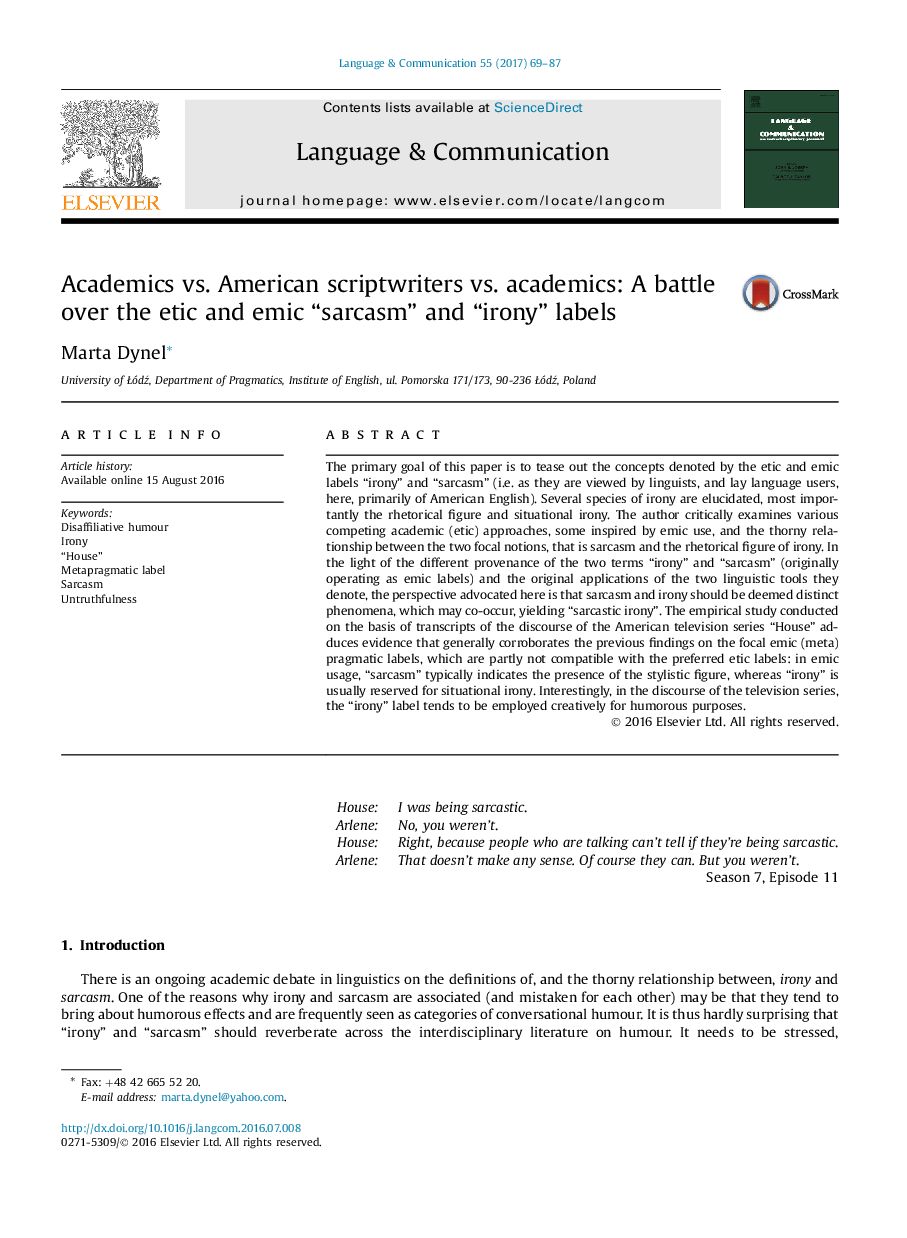| کد مقاله | کد نشریه | سال انتشار | مقاله انگلیسی | نسخه تمام متن |
|---|---|---|---|---|
| 5042948 | 1474910 | 2017 | 19 صفحه PDF | دانلود رایگان |
- Examination of several species of irony.
- Critical examination of competing academic (etic) approaches to irony and sarcasm.
- Study of emic (meta)pragmatic labels “irony” and “sarcasm” in the discourse of the series “House”.
The primary goal of this paper is to tease out the concepts denoted by the etic and emic labels “irony” and “sarcasm” (i.e. as they are viewed by linguists, and lay language users, here, primarily of American English). Several species of irony are elucidated, most importantly the rhetorical figure and situational irony. The author critically examines various competing academic (etic) approaches, some inspired by emic use, and the thorny relationship between the two focal notions, that is sarcasm and the rhetorical figure of irony. In the light of the different provenance of the two terms “irony” and “sarcasm” (originally operating as emic labels) and the original applications of the two linguistic tools they denote, the perspective advocated here is that sarcasm and irony should be deemed distinct phenomena, which may co-occur, yielding “sarcastic irony”. The empirical study conducted on the basis of transcripts of the discourse of the American television series “House” adduces evidence that generally corroborates the previous findings on the focal emic (meta)pragmatic labels, which are partly not compatible with the preferred etic labels: in emic usage, “sarcasm” typically indicates the presence of the stylistic figure, whereas “irony” is usually reserved for situational irony. Interestingly, in the discourse of the television series, the “irony” label tends to be employed creatively for humorous purposes.
Journal: Language & Communication - Volume 55, July 2017, Pages 69-87
